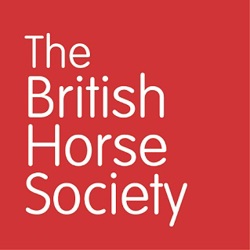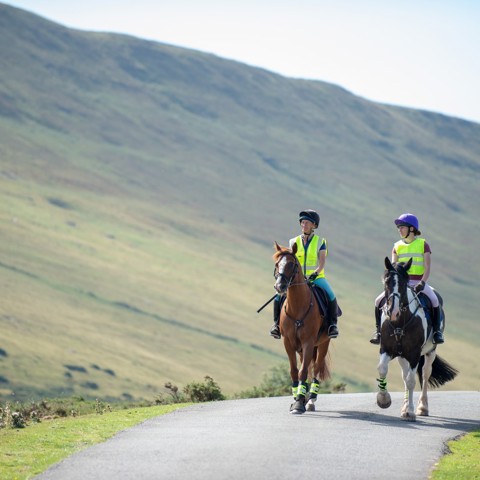Find what you are looking for
- Advice notes are grouped into sections. Councils or contractors are most likely to find help under Structures and surfaces or Changes to bridleways and byways.
- Other publications include research studies commissioned by the BHS or others.
- Lobbying and political activity will help with influencing change for greater inclusion of equestrians (see also Including horses under Structures and surfaces in 1.).
1. Advice notes
Advice notes are reviewed at least once a year. If you cannot find the topic you need, email access@bhs.org.uk or call 02476 840515.
What you may find on bridleways and byways
chevron-down
chevron-up
- Opening gates | Oct-24
- Riding or driving through livestock | Aug-24 (cattle, horses and other animals)
- Level crossings | Nov-24
- What to do about blocked and difficult to use bridleways and byways | Feb-25
- Avoiding conflict | Jun-24
- Horse dung | Aug-24
- Fly-grazing | Jun-24
- Stallions on land with equestrian access | Oct-24
- Shooting | Jun-24
- Solar farms | Apr-24
- Wind turbine advice for riders and carriage drivers | Mar-24
Other pages on potential hazards
Riding out
chevron-down
chevron-up
Researching and recording bridleways and byways
chevron-down
chevron-up
Find out more about unrecorded rights of way on Project 2026.
Changes to bridleways and byways
chevron-down
chevron-up
Structures and surfaces
chevron-down
chevron-up
Most of the advice here is aimed at councils and others responsible for providing equestrian access.
There are no 'BHS approved' structures or surfaces. Approval is always site-dependent. The Society's advice here is generalised, based on optimum for most equestrians and horses. Please consult the Society for specific circumstances. Horses and their riders or drivers vary considerably in size, agility, character and preference, however, the Society's advice aims to be inclusive, even if individuals have different opinions.
Surfaces
- Surfaces | Mar-25
- Bridges, fords, gradients and steps | Oct-24
- Bound rubber-aggregate surface | Jan-25
- Cattle grids | Jul-24
Structures
- Gates | Dec-24
- Gate installation | Jul-24
- Vehicle barriers | Dec-24
- Mounting blocks | Mar-25
- Hitching rails | Jun-24
- Deer gates | Jul-24
Including horses
- Dimensions for width, area and height | Nov-24
- Road crossings | Aug-24
- Multi-user and active travel routes | Nov-24
- Construction sites | Aug-24
- Horsebox parking | Jan-
- Guidance for planners and developers | Jan-25
Other factors affecting horses
2. Other publications
BHS Equestrian Access Strategy
chevron-down
chevron-up
Our Equestrian Access Strategy aims to enable every horse rider and carriage driver to be able to ride or drive from their stable onto a safe network of off-road paths, and until that time, to be able to access those safely via the road network.
Memorandum of Understanding
chevron-down
chevron-up
A memorandum of understanding (MOU) is an agreement between two or more parties that has been formally documented. An MOU is not necessarily a legally binding document. Signing of the MOU document signifies the intention and willingness of the involved parties to work collaboratively, towards the mutually identified goals and expectations within the MOU.
Research and reports
chevron-down
chevron-up
Some of these reports are now some years old but their content remains relevant and pertinent.
- BHS Access & Rights of Way 2024 Annual Review (Issued January 2025)
- Statistics related to equestrian access (2025)
- Manifesto (2024)
- Manifesto Asks (2024)
- BHC Manifesto (2024)
- Hampshire Countryside Access Forum Reference Guide (2023)
- Conspicuity of horses and riders on roads (2018)
- Self-Closing Gates Trial (2015) (Natural England in association with the BHS)
- Self-Closing Gates Trial (2011) (The BHS)
- Making Ways for Horses (2012)
- Wind Turbine Experiences Survey (2012)
- Health Benefits of Riding (2010)
British Horse Society Guidance Documents
chevron-down
chevron-up
3. Lobbying and political activity
The Society represents equestrians nationally about public rights of way and access. This means engagement with government through stakeholder groups and bodies such as Natural England and Natural Resources Wales, Forestry England and highways agencies. It includes lobbying ministers where appropriate and asking for questions in Parliament.
Letters to Ministers & Stakeholders
chevron-down
chevron-up
Letters to Ministers
- Inclusion of access in new Environmental Land Management Schemes | Feb-2023
- Funds for Active Travel training | Feb-2023
- Letter to environmental food and rural affairs committee | Mar-2023
Letters to Stakeholders
- BHS response to Forestry England's Horse Riding Permit’s Survey | Apr-2023
- BHS proposed exceptions from the 2031 Cut-Off Date submitted to Defra for consideration | Sep-2023
Responses
APPG Evidence
Template letters for you to send to your MP
chevron-down
chevron-up
Bridleways and byways are recorded, with footpaths, on formal documents called the Definitive Map and Statement, created and maintained by each county council. Many ancient bridleways and byways are not shown on the maps, but they can be added if evidence of an unrecorded right is collected and submitted.
The Countryside and Rights of Way Act 2000 included a clause to end such submissions to add unrecorded historical rights of way on 1 January 2026. This created a huge task for organisations like the BHS which have worked very hard to research missing routes and make applications to record them. At the same time, the Society has continued to argue that the task has not been given the support promised by government and the clause should not be commenced. In February 2022, the government declared that they would repeal the clause. A similar announcement was made in December 2024, however, the clause has not yet been repealed and the clock is still ticking.
Below is a template letter which you may wish to edit to send to your MP in support of repeal of the cut-off date.


